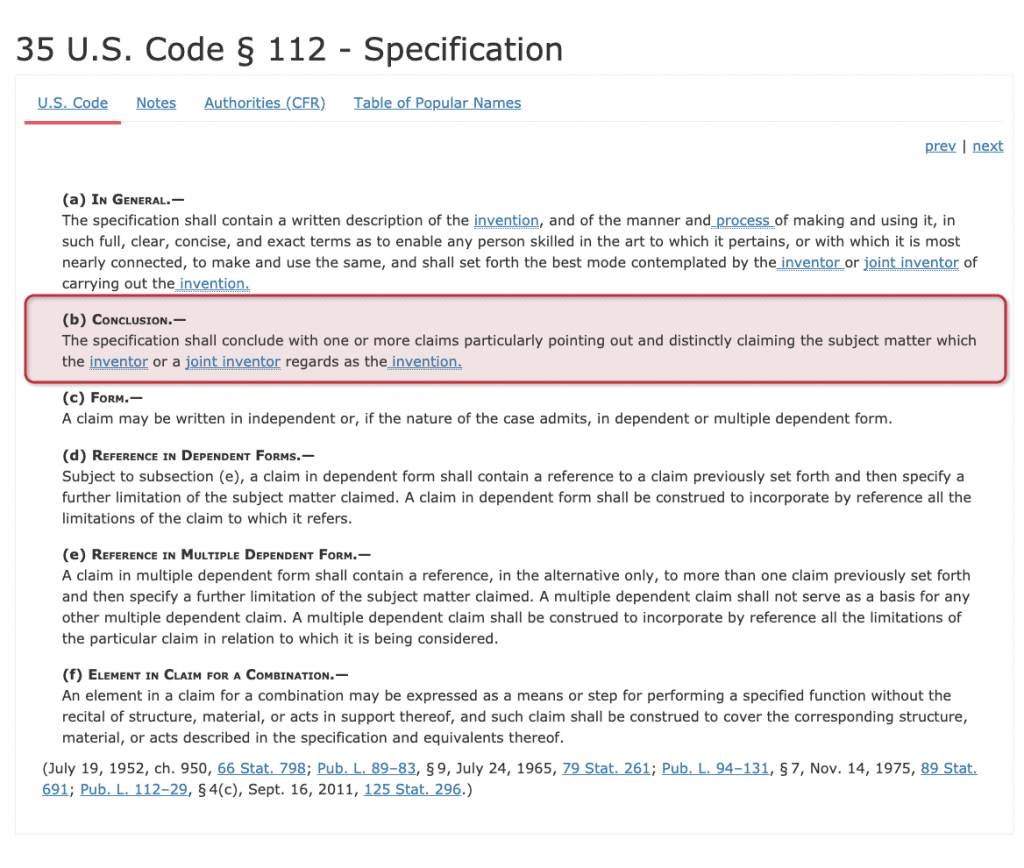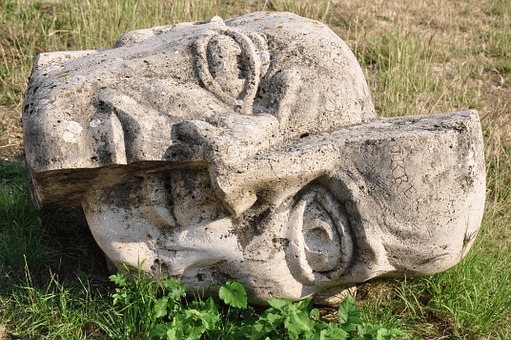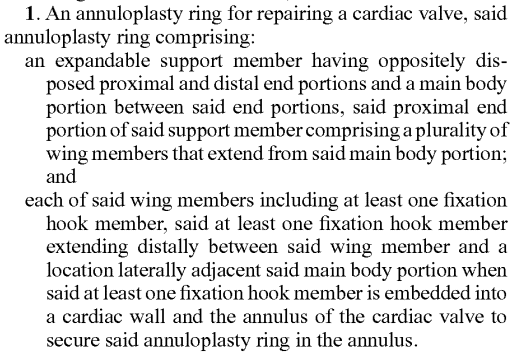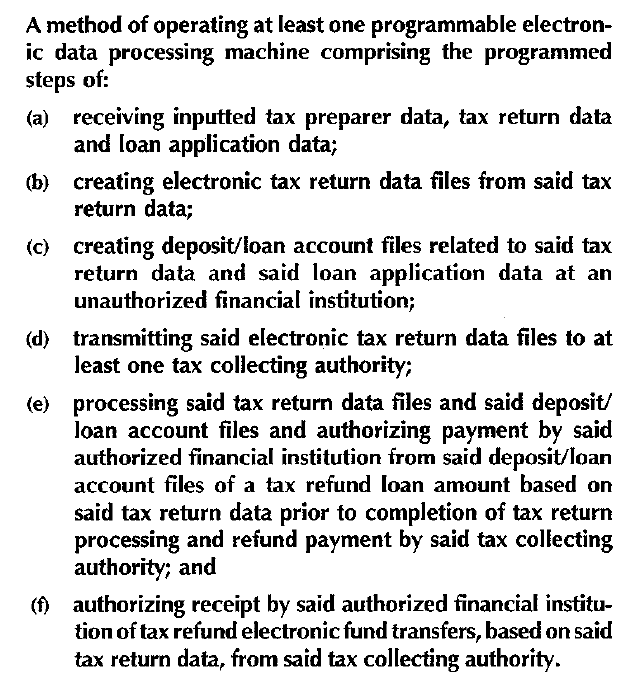Usually as I write articles, I also learn. It’s the beauty of writing for an audience (much like teaching/presenting to a group). There’s a sense of responsibility to make sure the content is good, up-to-date and interesting.
This article undoubtedly has left me with a TON more knowledge about claim drafting and will be a page that I personally keep pinned/tagged to return to for my own patent drafting/review work I do at Bold Patents.
Side Note: I’m a compulsive Chrome browser pinner…I’ve got 20+ tabs pinned. You don’t have to take it that far, but I’m just saying, make this one of those 20…
It’s my hope that anyone reading this article will gain an appreciation for the art of claim drafting, and the fact that this is the heart of what a Patent Attorney does, at least on the prosecution side.
Additionally, it largely shapes the fundamental invention rights that we work so hard to attain for our inventor clients!
If anything, I hope this article will give you an appreciation for the nuances of patent claim types.
And honestly I hope that you FREAK out at how amazingly complex this area of law is, and you rush to www.boldip.com and schedule time today at talk with a patent attorney to handle this for you while you work on inventing and building the business of your dreams!
Haha… ok, you’re too smart for that? Or… maybe I haven’t proven it to you yet. I like that. I like you! You’re the kind of tough DIY-er who, whether you end up hiring a professional to help you or not, is going to understand as well as you can what you’re delegating and how it works.

So! With all that said, let’s jump in to this murky, geeky, arcane, ever-changing area of the law we call Patent Claim Drafting.
Part 1: Patent Law & USPTO Rules on Patent Claims
There are many, many rules governing patent law. I mean, you can just see the vast code if you take a peek at the Manual for Patent Examining Procedure (MPEP) here.
Of all of the rules cited there and on the USPTO.gov, the statute that governs patent claims is 35 U.S.C. Section 112. I like the Cornell website for displaying laws, so here is a screenshot:

So…THAT is why you find Patent Claims at the END of the written description (specification) – it’s actually written into the law that the claim set be the “conclusion” of the spec.
This (b) section of the law actually lays out some very simple language (as far as law goes). It states that the claims must “particularly point out and distinctly claim” the subject matter.
By definition then, an inventor cannot make the claim generally and say something like, “Yeah, see the above written description and drawing – I claim that…” There’s actually a term for that in patent parlance called “omnibus claiming” which is specifically mentioned as not allowable.
What types of inventions are eligible for patenting?
This is in large part answered in my most recent blog on Patent Eligibility and I encourage you to take a short detour there now. For the summary, stick with me here. The four types of utility patents that may be granted are:
- Machines: A tangible, concrete thing that has parts
- Manufacture: When a combination of parts on material takes on new forms or qualities
- Process: A series of steps or activities
- Composition of Matter: Two or more substances that form a molecular/chemical union or material mixture
In general, the following 5 subject matter are NOT eligible for patent protection:
- Mathematical Concepts: e.g. E= MC2
- Methods of Organizing Human Activity: e.g. Method for how to Shake a Hand
- Mental Process: e.g. Process for memorizing many numbers only using your brain
- Laws of Nature: e.g. Gravity, Acceleration, Friction, etc…
- Natural Phenomena: e.g. Process for water evaporation using sun
As you’ll read in my Patent Eligibility article, even if your invention might fall into one of these areas, as long as your invention has a practical application and an inventive concept, it is patent eligible.
Double patenting is not allowed either. The essence is that no two separate patents may be granted for substantially the same invention.

When a parent (initial) patent application is submitted, there is opportunity to file continuation applications that at least in part seek priority back to the original parent application.
The most typical type of double patenting rejection is where the examiner says that at least one or more claims of the subject patent application are obvious based on an earlier filed patent application.
The solution is to file a terminal disclaimer which will limit the later filed application’s life, such that the expiration of the newer application will be the same as the initial application. In other words, they will have the same enforceable life.
Part 2: How to Format the Claims
The claims must be placed after the specification in the patent application. So make sure to list the claims after the written description portion of the application!
Now, it is common (and often quite efficient) to draft the claims of a patent BEFORE drafting the specification – for reasons we will address later with respect to making sure the claims are adequately covered in the written description and for efficiencies sake so that you don’t go on and on about subject matter that is unclaimed.
Many patent applications are quite lengthy (on the order of 40-50+ pages), so there is a lot of scrolling to do!
The claims are not always easy to spot… so make sure you look for the phrase “I Claim” or “We Claim”.
That’s how they should be formatted, and if you’ve got a searchable PDF, you can simply “CTRL+F” and find “Claim” in the document – here’s a typical location for claims:

Patent claims must be numbered! Now, for Design Patent Applications, there is only ONE allowed, but for Utility patent applications, you can have several (up to 20 without additional fees being owed).
Take another look at this paragraph which goes from line 55 through line 75… notice anything else?

NO PERIODS! Not to mention lots and lots of semicolons. There is a rule that each claim must be exactly one sentence long.
The broadest claims should be first. This means the claims that cover the MOST subject matter should be listed numerically earlier in the claimset.
This is convenient for the examiner, as they read through the claims, so they know the earlier claims are going to be the easiest to find prior rejections for.
Example:
I claim:
- A stuffed toy animal having…
- A stuffed toy animal as recited in claim 1, where in…
- A stuffed toy animal comprising a head, plurality of arms, legs…
A preamble is required and must use language which helps define which of the 4 major types of eligible subject matter is being claimed (i.e. machine, assembly, composition of matter, or process).
The title usually does well as a good preamble on the claims and is usually short, which is a good thing for the preamble as well.
Most court decisions do NOT give weight to anything alleged to be claimed by the preamble, so keep any key phrasing for the heart of the patent process. However, there have been cases where terms DO limit certain elements, so keeping them short and sweet is the BEST way.
Some claim types lend themselves to requiring a longer preamble than others. Machines/Assemblies can usually be shorter like:
“A device for positioning articles to be drilled comprising…”
But, if trying to claim the material itself, you may need to say something like:
“A composition having a tensile strength of at least X, and hardness level of at least Y, comprising material A, at least 10% of material B, and material C.”
And then in the claim, supplement additional clauses with:
“whereby material A is comprised of…” and “whereby material B is comprised of…” and finally “whereby material C is comprised of…”
The GOLDEN word: “Comprises”…
This word has been defined by MPEP 2111.03 and other case law as “including the following elements but not excluding others” …
Ah, the beauty of that. It is OPEN ENDED and you are able to capture/claim perhaps more than is written down in the claims (but must be described in the specification).
Not-so-Golden Words…
Unless you have good reason to limit your claims and scope of patent rights (which you may, in trying to amend your claims to narrow scope around a prior art reference), then you generally DON’T want to use CLOSED wording: “consisting”, “consisting of”, “constituting”, “being”, “composed of”.
NOTE: There may also be a need to include “consisting of” in genetic/chemical claims in order to affirm utility/functionality of the invention because additional elements could completely change the material/molecular combination
There are arguable words such as “having” and “containing” that are supposed to be open-ended, but decisions are not as strong as “comprising” as above.
Structure of a Claimset:
- Claim Statement “I Claim”, “We Claim”, or “What is Claimed is” [see yellow highlight]
- Preamble [see red highlight]
- Transition Word/Phrase [see blue highlight]
- Dependency Determination [see green highlight]
- Body of Claim [see purple highlight]
Here’s an example with each highlighted below:

Notice anything funny? The green highlighted area has no words…why?
That’s right! Because it is an independent claim… it doesn’t have dependency. Here’s a dependent claim example below, with the same color breakdown:

In this example, there is no red-highlighted preamble, because it is a dependent claim, so there is none! Also, there is no need for a claim statement, as the claims have already started with Claim 1.
Part 3: Drafting Apparatus Claims
Preamble
Apparatus claims should have a specific type of preamble. It is likely the most straightforward type. A common example is “Apparatus for…”
The Word “Apparatus” can be substituted (as desired) with words like machine, device, circuit, etc. to fit the claim set and spec for the invention.
As discussed in Part 2, the preamble, while arguably not part of the claimed invention, IS considered to be part of the invention and can be used by the examiner when determining patentability.
Therefore, as needed, a descriptive preamble might be enough to get around prior art if it can be distinguished by the examiner during prosecution.
Initial Example: “A lawn mower…” would subject the invention to being rejected for any type of lawn mower. Whereas “A powered lawn mower…” at least distinguishes it from a manual/push type lawn mower without taking away much from the claim’s breadth.
Elements
The goal is to make sure not to limit the overall rights of the invention, and conflate elements that should not be together or that should be separable pieces.
Here’s an example of a wheelbarrow claim set, and how it can be improved:
Poor:
A wheelbarrow having a tub on a first end, coupled to a plate mounted between the support braces on the second end.
Better:
A wheelbarrow having a tub on a first end; and
A plate mounted between the support braces of a second end.
Best:
A wheelbarrow having a first end and a second end;
The first end comprising a tub;
The second end comprising support braces; and
A plate is mounted between the tub and support braces
Sometimes you will want to use a negative limitation. This means that you’ll want to claim the absence of some elements. This type of claim is allowable, but usually only when the negative is the only way to state it.
For example, “colorless” or “nonmagnetic” have been allowed, because there is no other way to explain it.
Other reasons could be that you want to show that your invention specifically doesn’t use an element in combination with others to show that it performs in a nonobvious fashion against common knowledge.
Support in the Specification
I talk about this A LOT with clients. This is why we spend SO much time writing such detailed descriptions of their inventions in the provisional and nonprovisional patent applications.
The main idea with having support in the spec is to make sure that with what you’re claiming you’ve fully enabled and described such that someone else in the field of technology could actually benefit from what you’ve created.
And when your patent rights expire, they could make/use/sell and we all would benefit from the utility.
Each element – and yeah, every single word in the claim – should also be fully described in the specification in a very clear unambiguous way.
Here’s a good example of an apparatus claim for an annuloplasty ring:

You can see there is the preamble: “An annuloplasty ring for repairing a cardiac valve…” They are using the preamble to distinguish and are even stating what the invention is for to further specify and narrow the claims.
DON’T FORGET THE DRAWINGS! The “specification” in my terminology covers BOTH the written description and the drawings.
If you’re claiming structure, it MUST be shown in a drawing. Even if what you’re describing in the environment has been around for decades, it must be shown.

Special Type of Claim Language “Means For”…
There is a very useful type of claiming where you don’t have to list EVERYTHING in the actual claim.
You can write something as simple as “A means for chopping wood…” and you don’t have to include all of the structural elements in the claim, so long as you cover them in the specification.
So, in the specification, you’d have to describe at least one way that you could chop wood.
Part 4: Drafting Process Claims
Process (or Method synonymously) claims have a distinct type of element. Each element must be directly linked in a series of steps from the prior and preceding elements.
In addition, as opposed to Part 3 where we described structure or components in an apparatus claim, each element of a process or method claim must be an ACTION (verb by definition) that is doing something to structure, workpiece or substance.
Here is a great example of a method claim set for method for catching insects here:

You can see the language, although not broken out with spaced clauses (which is preferred) still follows the format of a method claim, where the verb takes the priority, and sets the stage for each discrete step (e.g. “catching”, “separating”, “hung”, “situated”, etc..”)
Usually a flow chart (instead of traditional structural drawings) is used to portray the information flow in addition to the words, just to make sure it is there.
Unless specified, THE ORDER OF STEPS DOESN’T MATTER…
This will give broader protection for the inventor. When you have certain action steps taking place, it is often true that multiple steps are performed at the same time, or could occur earlier than the step that preceded it without disturbing the functionality in the preamble.
The steps, if they don’t have to be done in a specific sequence, should be laid out in a logical/efficient order, but no sequence is stated. Not specifying the sequence will broaden the scope of rights – so resist the temptation.
A common type of process is a chemical process, whereby the steps to create a compound are claimed. Here’s an example:

This is the way to produce sodium hydroxide which is quite common in drain cleaners, oven cleaners and the like.

Chemical processes are just like other process claims. What usually makes chemical processes unique (and patentable) is what they result in (what they create) rather than the steps performed.
If the claim uses an unobvious starting material for a use that was not previously known or was taught otherwise, then it will suffice to meet the requirements under 35 USC 103 (Nonobviousness).
Another type of claim is for a computerized method or software.
This type of claim is eligible under 35 USC 101 so long as the program or method is transformative or can be shown to have a practical application in some manner, in that it DOES something other than merely being an algorithm, manipulating numbers, and being tied to a particular machine, apparatus or some tangible device.
Another very popular type of process is a business method. A business method would be treated no differently than a computerized method/process or software process.
Again, this type of claim is eligible under 35 USC 101, and just like computerized method or software:

Part 5: Composition of Matter Claims
Different from a method of making a compound (see part 4), composition of matter claims simply LIST THE INGREDIENTS that make up the composition.
What must (usually) happen, is the inventor must define a range of specificity:
- Really narrow claiming can be done by naming specific chemical elements or types of compounds (i.e. water)
- Intermediate claiming where a range of certain element(s) are captured (i.e. 10-20% by weight water)
- Broadly claiming the functionality that the element provides
In order to get around prior art on novelty issues, the proportions or effects of environment can help distinguish. Examples include rust inhibition, or antibiotic, durability, etc.
Here is an example composition of matter claim. Notice how there is no process or method steps, and no ACTION words (as we saw in Part 4):

The biggest challenge with this type of claim is the problem of obviousness because of the ease with which one might be able to experiment with other mixtures.
But the examiner has the challenge of trying to prove that there was a teaching/suggestion/motivation in order to be able to show its obviousness.
Part 6: Design Patent Claims
Well…there is actually only ONE claim in a design patent application.
The claim is usually VERY short. This is on purpose, so that what is being claimed is not going to limit or take away from what is shown (very carefully) in the drawing itself.
Design Patent Drawings (which we could spend an entire blog talking about) are done a very particular way to showcase the curvature, outer and inner surfaces (as needed) in order to capture what the inventor is claiming is unique.
Here is a good example of a design patent issued in 2004, which was originally filed in Taiwan:

You can see here that the Claim is VERY simple:
“The ornamental design for a summer sleeping mat for pets, as shown and described.”
This leaves all rights and gray area to the drawing itself.
Summary
I hope you have a much deeper understanding and appreciation for patent claiming and just how much work goes into putting into words what our inventors have created, and trying to be careful to do the best we can with these amazing inventions every day.
Just remember the six main parts:
- Patent Law & USPTO Rules on Patent Claims
- How to Format the Claims
- Drafting Apparatus Claims
- Drafting Process Claims
- Composition of Matter Claims
- Design Patent Claims
Thank you for your dedication to education, and for supporting us on social media and beyond.
If you are ready to Go Big and Bo Bold℠ please click here to book a free consultation!
How will you get started on your claim?
Legal Note: This blog article does not constitute as legal advice. Although the article was written by a licensed USPTO patent attorney there are many factors and complexities that come into patenting an idea. We recommend you consult a lawyer if you want legal advice for your particular situation. No attorney-client or confidential relationship exists by simply reading and applying the steps stated in this blog article.

